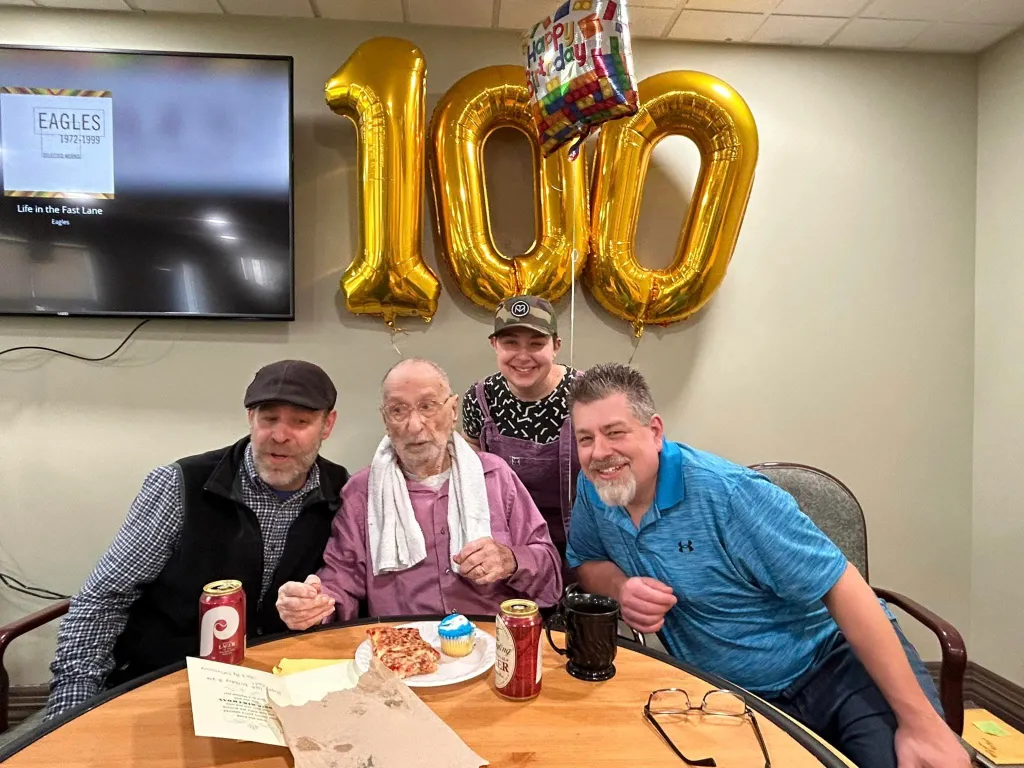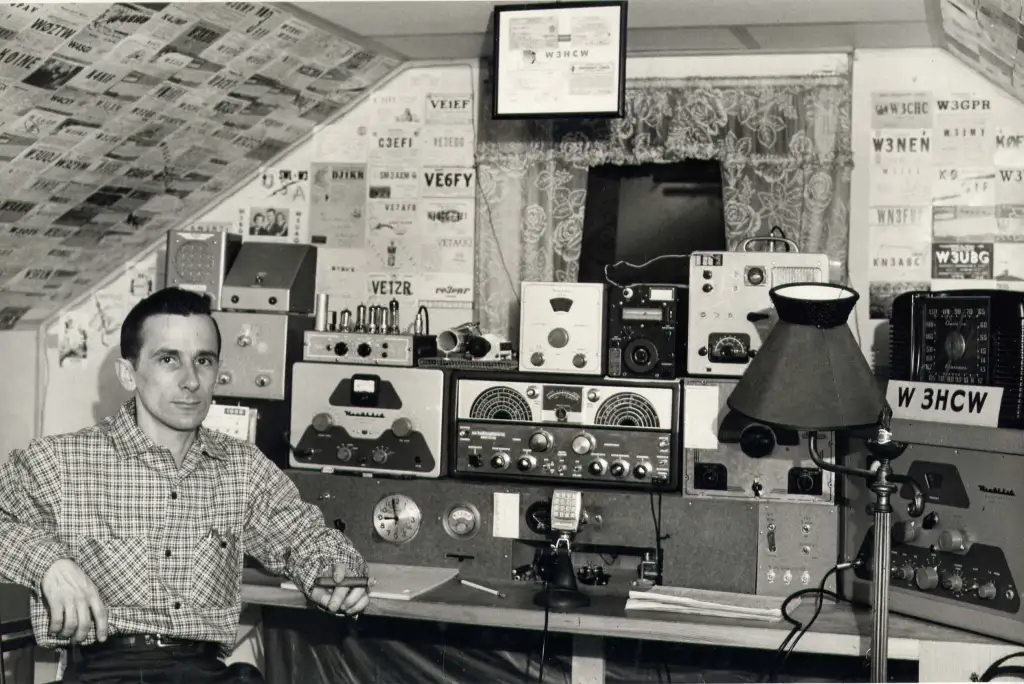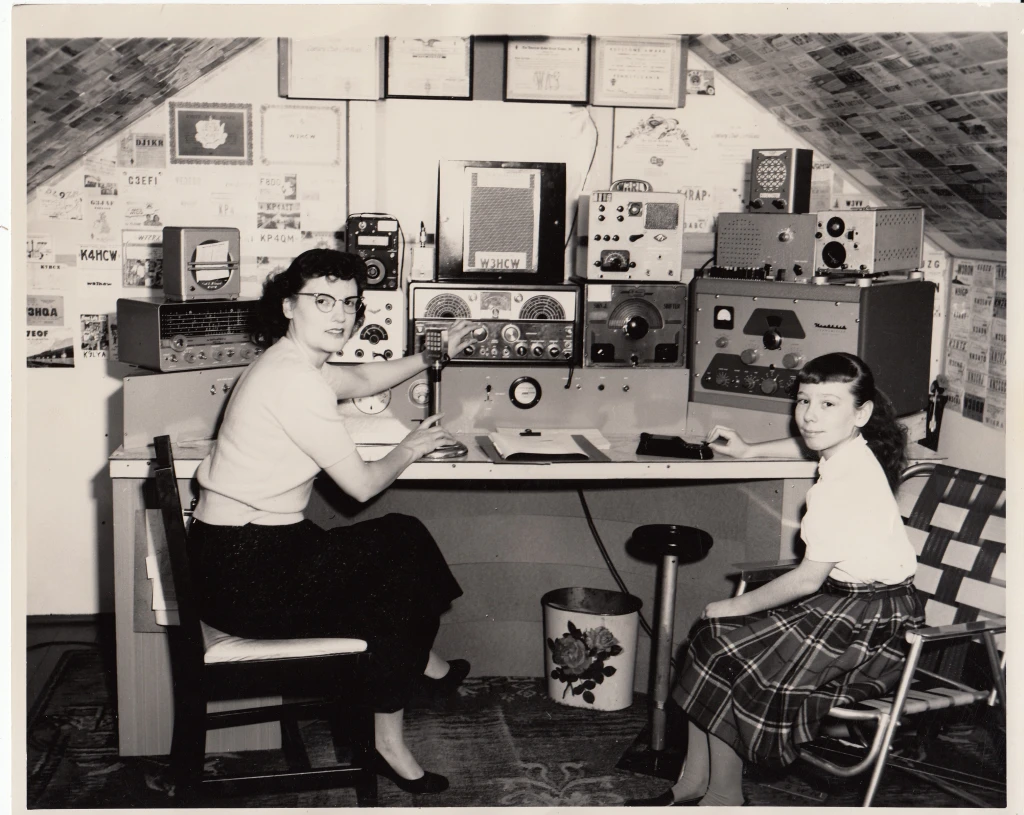 W3HC SK
W3HC SK
Unfortunately, a few days after Carl W3HC (ex-W3HCW) celebrated his 100th birthday, he fell ill, declined rapidly, and passed away. We can’t complain as he lived a full life and got to enjoy a beer at his birthday party.

Photo credit: Karen Vibert-Kennedy, Williamsport Sun Gazette
Carl was an avid photographer all his life. The Williamsport Sun Gazette featured an article and video on his time in Berlin during World War II, taking photographs. While in a bombed out home, he found a roll of film which he took home and later developed. He was shocked to discover the photos were taken by a German photographer and even included pictures of Himler, who was the #2 in Germany at the time. Many of his photos are featured on his Flickr site.
I owe my grandfather a lot of gratitude as he’s the one who got me into amateur radio which led to me getting my first two jobs in wireless and communications, and laid the foundation for a rather successful career. I continue to be active in amateur radio, with QRP, field operation, circuit design, open source software development, and homebrewing equipment being my favorite activities.
Carl was first licensed in 1956 as WN3HCW, back when Novice calls had the WN prefix. After upgrading to Technician, the FCC dropped the N and he became W3HCW. Later in the 90s when he upgraded to Extra he shortened his call to W3HC. During my time with him as a youngster and teenager, he operated nearly all HF phone and enjoyed DXing, but he also did a lot of 6 meter AM work in the 60s. He operated theW3HCW QSL Fund which funded QSL cards for DX stations, and he was a QSL manager for about 130 stations over the years.
Carl McDaniel, W3HC, SK at 100 years and 6 days. dit dit
This article was originally published on Radio Artisan.
Anthony, K3NG, is a regular contributor to AmateurRadio.com.
 ICQ Podcast Episode 429 – Marconi Day Fun
ICQ Podcast Episode 429 – Marconi Day Fun
In this episode, we join Martin Butler M1MRB, Chris Howard (M0TCH), Martin Rothwell (M0SGL), Frank Howell (K4FMH), Bill Barnes (WC3B) and Leslie Butterfields (G0CIB) to discuss the latest Amateur / Ham Radio news. Colin Butler (M6BOY) rounds up the news in brief and the episode's feature is Marconi Day Fun.
We would like to thank our monthly and annual subscription donors for keeping the podcast advert free. To donate, please visit - http://www.icqpodcast.com/donate
- MFJ Ceasing On-Site Production
- California Radio Club Faces Homelessness
- Debate Reopens Over AM Radio's Future In Cars
- Hams Prepare for SOS Radio Week
- Updated Spectrum Analyser Software for SDRplay RSPs
- UK Radio Syllabus v1.6 Published
Colin Butler, M6BOY, is the host of the ICQ Podcast, a weekly radio show about Amateur Radio. Contact him at [email protected].
 3G0YA in the log on 20m CW.
3G0YA in the log on 20m CW.
The other day I joined the 21st century loaded Ham Alert on my iPhone and set up Easter Island. On the first attempt to enter 3G0YA into HamAlert, I did not add a CW only and was flooded with digi and SSB spots. I managed to check out some YouTube videos and got that organized. Up to this point, I have been hit and miss using the DXheat cluster with no luck. I have never been able to hear them just the pileup they were working. Well, yesterday morning Ham Alert told me to head over the 20m, I did that and there they were but only at S1. I waited and then they bumped up to S4 and away my call went out onto the waves of opportunity.
In the past, I have been hoping so badly for a DXpedition station to hear me so felt I somehow heard part or all of my call. To only let down that I was not actually in the log once I checked. Hearing my call was only my ambitious imagination. This time when I dropped my call I was not sure if I heard or maybe imagined I heard my call. As Murphy would have it they went from S4 to S1 with their comeback to me. I listened and maybe heard again VE9KK 5NN.....so what the heck I tossed out my 5NN TU.
I continued to listen and wow for a few moments they were S6 or more so I tried again and this time I was sure I made it in the log. They called back "VE9", I tossed my call again and they came back "VE9KK 5NN" The funny thing was when I checked Clublog I found I was in the log the first time and it was not Murphy playing with me.
Mike Weir, VE9KK, is a regular contributor to AmateurRadio.com and writes from New Brunswick, Canada. Contact him at [email protected].
 So your a chatty Kathy………..Part 2
So your a chatty Kathy………..Part 2
Mike Weir, VE9KK, is a regular contributor to AmateurRadio.com and writes from New Brunswick, Canada. Contact him at [email protected].
 The May-June 2024 SARC Communicator Journal
The May-June 2024 SARC Communicator Journal
Heading into summer...
With another big issue. The May-June 2024 Communicator, digital periodical of Surrey Amateur Radio Communications is now available for viewing or download.
Read in over 150 countries, we bring you 120 pages of Amateur Radio content from the Southwest corner of Canada and elsewhere. With less fluff and ads than other Amateur Radio publications, you will find Amateur Radio related articles, projects, profiles, news, tips and how-to's for all levels of the hobby.
You can view or download it as a .PDF file:
Previous Communicator issues are at:
Search for past Communicator issues
and a full index is HERE.
As always, thank you to our contributors, and your feedback is always welcome.
The deadline for the next edition is June 15th.
If you have news or events from your club or photos, stories, projects or other items of interest from BC or elsewhere, please contact us at [email protected]
73,
John VE7TI
'The Communicator' Editor
 W3HC 100
W3HC 100
My grandfather, W3HC (ex-W3HCW), is 100 years old.
Grandson Kevin, Mac W3HC, great-granddaughter Eliza, grandson K3NG.
Grandson Kevin and W3HC having some 807s.
Mac (then W3HCW) in his shack in Williamsport, PA, USA sometime around 1956-57.
My grandmother, Gladys, K3JJN (SK), and my mother, Sherry, who passed away in 2000. Photo from around 1959 or 1960.
Mac in Whales, WWII, 1945.
Anthony, K3NG, is a regular contributor to AmateurRadio.com.
 Ham College 112
Ham College 112
Ham College episode 112 is now available for download.
Extra Class Exam Questions – Part 50
E9H Receiving Antennas: radio direction finding antennas, Beverage antennas, specialized receiving antennas, long-wire receiving antennas.
George Thomas, W5JDX, is co-host of AmateurLogic.TV, an original amateur radio video program hosted by George Thomas (W5JDX), Tommy Martin (N5ZNO), Peter Berrett (VK3PB), and Emile Diodene (KE5QKR). Contact him at [email protected].




















